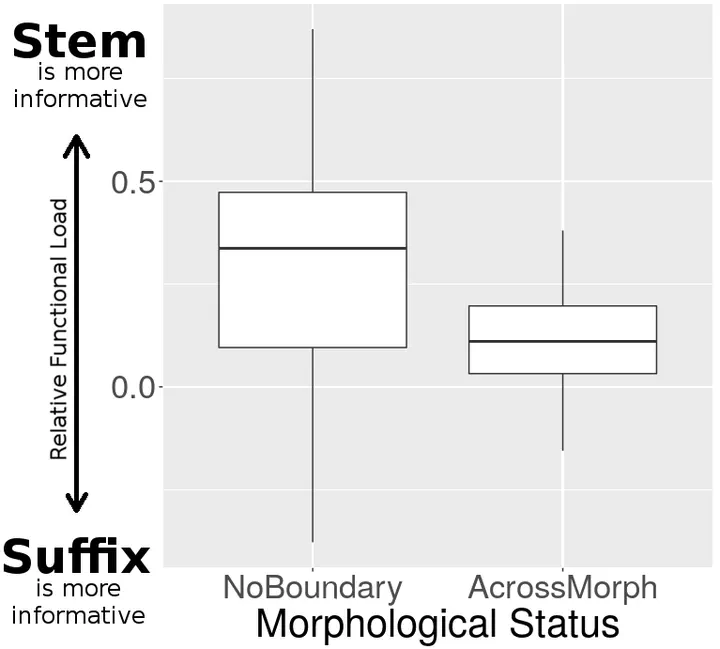Relative functional load determines co-articulatory movements of the tongue tip

Abstract
Does morphological structure affect articulation when segmental similarity is strictly controlled? To address this question, we used electromagnetic articulography to study the articulatory trajectories of tongue tip and tongue body during the articulation of German words containing [a(:)] as stem vowels followed by [t] that in roughly half of the words realized an inflectional function. According to a generalized additive model fitted to the articulatory trajectories of tongue body and tongue tip sensors using electromagnetic articulography, a factorial predictor signaling the presence or absence of an inflectional exponent underperformed compared to a quantitative measure derived from a Linear Discriminative Learning model. This quantitative measure is based on the functional load of triphones, i.e.,the extent to which a triphone contributes to the meaning of the word. The relative functional load of the stem triphone (centered around [a(:)]) and the triphone pivoted on the [t] emerged as a strong co-determinant of articulation. Importantly, words with a balanced relative functional load (i.e., a value close to zero) revealed optimized smooth co-articulation at tongue body and tongue tip sensors. These results provide evidence for the possibility that differences in the details of articulation straightforwardly reflect differences in meaning as captured by distributional semantics.